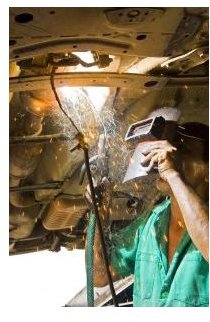Following the Steps Involved in Job Analysis
Job Analysis: An Overview
Job analysis is the process that determines what is done on a job and what skills and qualities are required to do the job ‘as it has been
designed’. This evidently helps to hire the right workforce into an organization. The information obtained in a job analysis aims to answer three main questions about the job:
- What is to be done?
- Under what conditions is the job to be done?
- What skills, knowledge, attitude and qualities are required to perform the job?
There are six steps involved in job analysis.
Step 1 Determine the Purpose of Job Analysis
Stating the objectives will suggest to you what data should be collected and how that data should be collected. Your purpose may be personnel selection, training, performance appraisals, promotion criteria or compensation plans. Once your purpose is clear, move to the next step.
Step 2 Review the Organizational Chart
Obtain an overview of how each job fits into the organization. The organizational chart shows the division of labor, how the job in question relates to other jobs, how the job fits into the overall organization, who reports to whom, and whom the jobholder reports to. A review of an existing job description, if any, also provides a starting point for preparing a revised job description.
Step 3 Select Representative Jobs for Analysis
When there are several similar jobs to analyze, it may be unnecessary to analyze all of them. Therefore, select a small number of representative jobs for analysis. Be careful that the representative jobs reflect all the duties and characteristics of related jobs.
Step 4 Analyze Jobs Using Data Collection Methods

There are several methods to collect the data. You can visit the job site and interview employees performing the job. Interview, if possible, the immediate incumbent or supervisor of the employee to obtain a different perspective of duties and responsibilities vested in the job.
Another good and widely used method is to have the employees fill out specifically designed questionnaires. A job questionnaire evaluates the following factors:
- Duties as well as how much time is spent on each specific task.
- Materials and equipment used.
- Work coordination and supervisory responsibilities.
- Knowledge, skills and abilities used.
- Working conditions.
Or, you can directly observe the employees performing their jobs and collect materials that indicate desired skills (safety manual, instructions, quality chart, etc.) from the job site.
Step 5 Check Information for Accuracy
You have collected the data; now what? It’s time to check the job-related information you have gathered for accuracy and completeness by verifying the information with the job incumbent. If necessary, go back to step four and recollect the data.
Step 6 Write Job Description and Job Specification
You are almost done! The final step involved in job analysis is to write the job description and job specifications, which are used as input for several HR activities.
After the job description and job specifications have been applied, the results are compared with the purpose of job analysis (determined at the first step) to assess the degree to which objectives have been accomplished.
Image Credits: sxc.hu
Coloniera2 and Celalteber
Additional Resource:
Job Analysis: An Important Employment Tool. US Department of Labor, retrieved at https://www.dol.gov/odep/pubs/fact/analysis.htm
